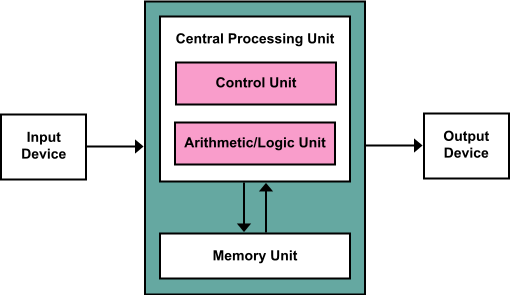Architecture of the central processing unit (CPU)
This is an important concept. You should fully understand this.
A central processing unit (CPU) is the electronic circuitry within a computer that carries out the instructions of a computer program by performing the basic arithmetic, logical, control and input/output (I/O) operations specified by the instructions. [1]
Major parts of a CPU[edit]
Below we see a simplified diagram describing the overall architecture of a CPU. You must be able to outline the architecture of the central processing unit (CPU) and the functions of the arithmetic logic unit (ALU) and the control unit (CU) and the registers within the CPU.
Please know and understand:
- Memory holds both data and instructions.
- The arithmetic/logic gate unit is capable of performing arithmetic and logic operations on data.
- The input unit moves data into the CPU via a bus
- The output unit moves results out of the CPU via a bus
- The control unit controls the flow of data within the CPU - which is the Fetch-Execute cycle described above
These videos are truly superb to help you understand parts of a CPU, and how they work.
Do you understand this topic?[edit]
- Describe the function of the ALU
- Describe the function of the control unit
- Describe the function of the program counter
- Describe the function of the clock
- Describe the function of an instruction
- Define instruction register
- What does a bus do?

